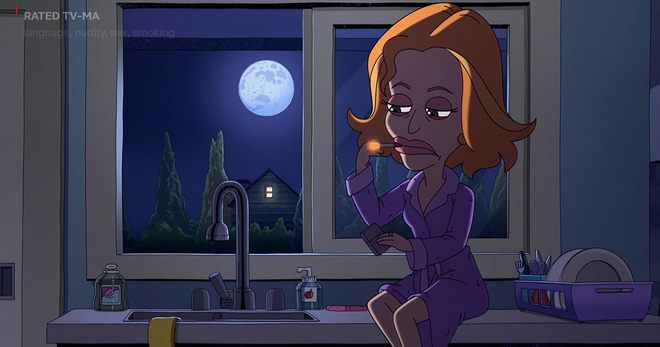Pervasive tobacco imagery on screen endangers youth and demands action
Onscreen tobacco imagery, in shows, movies, and music videos, points to an overall problem with the normalization and glamorization of smoking and vaping in entertainment media and pop culture. Tobacco imagery on screens is directly contributing to the youth e-cigarette epidemic and the entertainment industry should not be complicit with the tobacco industry in helping put a new generation of young people at risk for nicotine addiction.
Truth Initiative’s fourth annual report looking at tobacco imagery in entertainment “While You Were Streaming: Nicotine on Demand,” finds rampant depictions in the most popular shows , movies, and music videos among youth and young adults in 2020, during a time when youth e-cigarette use remained at epidemic levels Depictions abound on screens today despite a 1998 Master Settlement Agreement prohibiting paid tobacco product placements in movies and TV programming and codified into federal law by the 2009 Tobacco Control Act. The expansion of the media landscape and increasing screen time among young people means that there are more opportunities for exposure than ever before. What we see requires urgent and ongoing action.
Industry leaders have been made aware of the issue — these past two years, the National Association of Attorneys General has sent letters to major U.S. streaming services and to creative guilds involved in producing and developing programs to urge these organizations to take action to protect young viewers from tobacco imagery — and they must do more.
Truth Initiative is calling for a comprehensive set of policies to curb tobacco depictions on screens. Because each area is governed in different ways, Truth Initiative recommends separate measures for movies, TV and streaming, music videos and video games, all based on the same core ideas:
- Educating parents and the public on the prevalence of tobacco imagery in entertainment media and pop culture and the health consequences of exposure
- Holding media industries accountable for indicating when tobacco imagery is present and giving an appropriate rating when it is
- Educating the creative professionals in these industries and encouraging responsible practices around tobacco depictions in entertainment media
- Ensuring that states are not subsidizing film, television and streaming productions that contain tobacco use
- Encouraging policymakers to recognize the prevalence of tobacco in these media sources and its effects on tobacco use.
- Conducting additional research to learn more about the consequences of exposure to tobacco in all media to develop best practices for protecting youth
All producers of video content, regardless of platform, should adopt the following policy principals:
- Commit to no tobacco depictions, including e-cigarettes, in future productions of youth-rated content (e.g., TV-14, PG-13 or below) unless the depiction unambiguously reflects the dangers and consequences of tobacco use or represents the tobacco use of an actual person, as in a biographical drama or documentary.
- Clearly mark previously produced material with tobacco descriptors so parents can appropriately evaluate content.
- Include anti-smoking advertising before previously produced material with youth ratings and tobacco depictions.
- Certify that no tobacco product placement appears in any future production (including consideration paid to producers, actors, etc.).
Taking action on tobacco use in pop culture is especially crucial given the high rate of e-cigarette use among young people. Vaping is threatening a new generation with nicotine addiction, and a groundbreaking new Truth Initiative study finds that youth and young adults with high exposure to popular streaming and TV shows containing any type of tobacco imagery have three times the odds of starting to vape compared to their peers with no exposure. Additionally, youth who use e-cigarettes have four times the odds of to ever using cigarettes than their peers with no prior tobacco use.
Exposure to tobacco imagery in pop culture can put the health of young people at risk. Keeping tobacco imagery out of movies, streaming content, video games and other forms of pop culture and entertainment media is critical to protecting the health of youth and young adults.
More in tobacco in pop culture
Want support quitting? Join EX Program
By clicking JOIN, you agree to the Terms, Text Message Terms and Privacy Policy.
Msg&Data rates may apply; msgs are automated.



